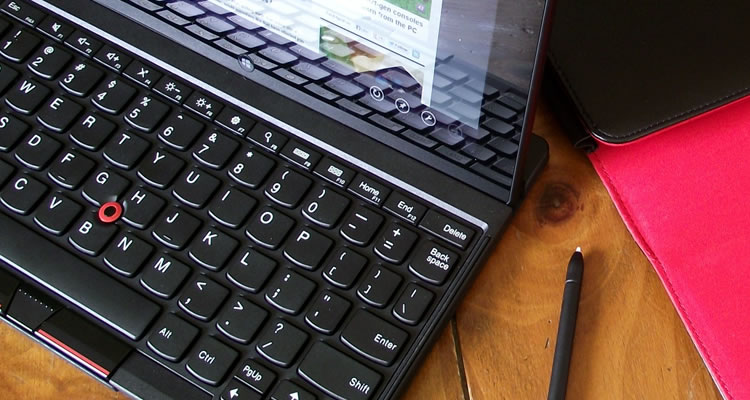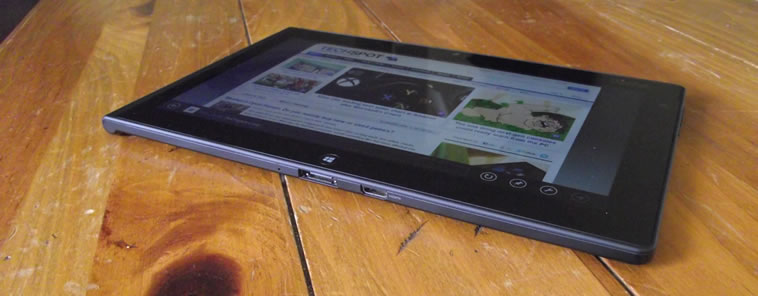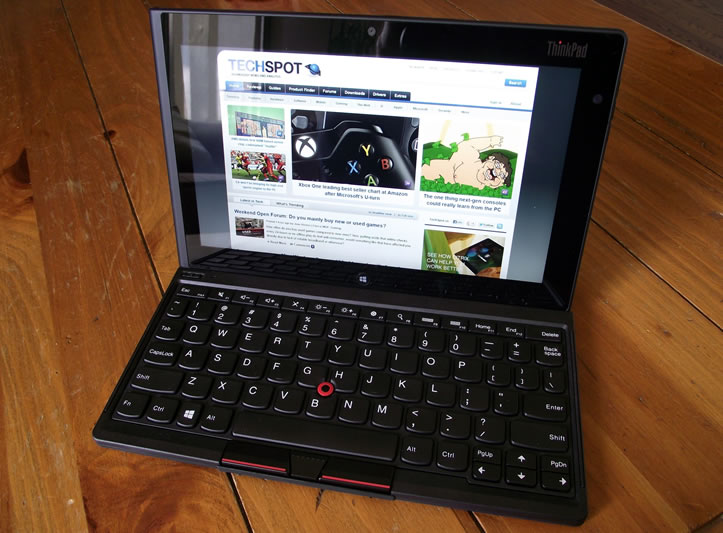When Apple's very first iPad hit the scene in 2010, their take on the "modern tablet" was destined to become ubiquitous: a thin, rigid slab of touchable electronics covered by a sheet of shiny Gorilla Glass. Following the iPad's resounding success, Apple (and others) made no apologies for designing their tablets as though they were giant smartphones -- or at the very least, something less than a full-fledged computer.
Gone were the days of custom software installations, file system management and editing config files; in their places appeared one-click app store installs, locked down software hell-bent on shielding users from directory structures and an often times disappointingly spartan selection of customization and configuration options.
Consider this though: Windows 8 Pro on a tablet challenges this mindset.
Say what you will about Microsoft's latest (and arguably not greatest) OS, but Redmond's software gives users back much of the control and utility lost during the shift to Apple's and Google's mobile operating systems. Thankfully, Windows 8 achieves this while simultaneously providing a mostly pleasurable tablet experience, even though they sometimes get in the way of each other.
Although this isn't a review of Windows 8, the OS is a wholly inalienable part of the latest Lenovo tablet experience and what the ThinkPad 2 offers is something Android and iOS have traditionally not: a fully functionally PC experience on your tablet. Let's see how it delivers on that promise.
Lenovo ThinkPad Tablet 2 - $580
- 10.1″ IPS Display (1366×768)
- Dual-core Intel Atom (Z2760 1.80GHz) w/ 4 threads
- PowerVR SGX545 graphics
- 2GB / 800MHz LPDDR2 RAM
- Windows 8 Pro 32-bit
- 64GB Flash Memory
- ThinkPad 11a/b/g/n + Bluetooth 4.0 combo chip, GPS
- Mini-HDMI, 3.5mm Audio In / Microphone Jack combo
- USB 2.0, micro-SD, docking connector
- 262.36mm x 164.59mm x 9.90mm
- 0.58kg (1.30 lbs.)
- Lithium Polymer Battery, 30Whr
- Sensors: ambient light, 3D accelerometer and magnetometer, gyroscope
- ThinkPad 2 tablet dock
- ThinkPad 2 bluetooth keyboard stand
- Fitted Sleeve and caring case
First impressions
Apple won't appreciate my perversion of their iPad Mini slogan, but the Lenovo ThinkPad 2 is every inch a ThinkPad. Polarizing as it may be in the consumer world, ThinkPads have long donned an inky-black design with well defined corners and edges. Love or hate it, the ThinkPad 2 tablet lives up to its namesake.
Lenovo's tablet is thin and light -- barely over a third of an inch thick at 1.3 pounds -- and feels like a sturdy and solid slab of quality materials. Overall, it's a handsome, premium feeling device. The tablet is a comfortable shape and pleasant weight to hold. The back cover and sides sport a familiar rubberized coating, not unlike most modern ThinkPad laptops. The rubbery material has a satin-like quality which is both pleasant to handle and less slippery to hold than bare aluminum-back designs (I'm thinking of you, first-gen iPad).
Our ThinkPad 2 review unit is leaps and bounds improved over its progenitor, the original ThinkPad tablet -- a chunky Android-based device which appeared in 2011, marred by poor battery life and a still maturing tablet market.
Performance
Subjectively, Lenovo's ThinkPad 2 tablet provides a smooth experience for most common activities; web surfing, checking your e-mail (even with Outlook), typing up a report in Word, opening up programs and streaming music. Despite only having a 720p screen, 1080p and high quality content from various online sources (e.g. YouTube, Hulu, Netflix) worked without any notable hiccups.
Although the inclusion of Clover Trail silicon holds the ThinkPad 2 back from being a true PC contender, it performs well enough in context to what it is: a fanless, portable tablet. Having two cores and four threads certainly provides some multi-tasking benefits, although I found it interesting that Windows 8 would only show CPU usage as though it were a single core.
Really though, its shortcomings don't surface until visiting media heavy websites, multi-tasking with resource intensive desktop applications or scrolling through web pages with lots and lots of busy elements. During these times, swiping and tapping can become a bit sluggish. Of course, graphics editing, video editing and media conversion are to be performed at the user's own peril.
In Futuremark's browser-based benchmark Peacekeeper, our ThinkPad 2 scored a 420. This means it fared slightly better than Acer's Iconia W500 and was on par with Apple's iPhone 4S. That puts it in the same league as some solid tablets like the Nexus 7 and Galaxy Tab 10.1. In all of its desktop-meets-Metro complexity though, Windows 8 seems a little tougher to run than either iOS or Android.
In 3DMark 2006, the device managed a paltry 455 -- a score indicative of its general uselessness for PC gaming. Being a fanless Atom-based tablet though, should we expect better? No. However, owners will find Angry Birds and other tablet-centric titles run quite well.
Under CrystalDisk, I found solid storage performance typical of mid-range to higher-end tablets. Sequential 1024K read/write scores hover around 81 MB/sec and 34 MB/sec, respectively. Meanwhile, smaller 4K read/writes slowed down to 8.6 MB/sec and 2 MB/sec. Although not anywhere close in performance to most standalone SSDs, opening applications and common file operations felt snappy and responsive.
When it comes to booting up, the ThinkPad 2 goes from off to Windows 8 logon screen in about 8 seconds.


